On Nov. 22, 1963, my address was an apartment at 2742 B Street in the Brooklyn-Golden Hill neighborhood. It was about 9:30 on a Friday morning. I had a free day until covering the Escondido-Kearny playoff that night in Balboa Stadium.
I don’t remember if I was watching television or listening to the radio, but within minutes there was a news bulletin: “Shots fired in Dallas.” Shortly later: “The President has been hit.”
Not knowing, but dreading the worst, I impulsively got into my car and raced to my parents’ house, all the while talking to myself, imploring, praying the President would be okay.
My parents lived a block from the 94 Freeway, near 47th Street and Federal Blvd. I arrived to the news that President John F. Kennedy had been assassinated.
HOURS LATER
Friday night was prep night at the Evening Tribune, where we attached far greater importance to high school sports than our rival, The San Diego Union.
I covered the city’s Eastern and Western leagues. Colleague Harlon Bartlett chronicled the Metropolitan and Grossmont leagues. We split the small schools.
On a normal Friday evening we’d return to the office after a game and probably work until 2 a.m., writing stories, captioning photos for the weekly prep picture page, chasing down coaches for quotes or scoring information on missing line scores.
Not so on this surreal Friday. Football games everywhere had been postponed or canceled.
Everywhere except the National Football League, which decided to go ahead and play on Sunday. Commissioner Pete Rozelle later said it was the most regrettable decision he had made in his 29-year tenure.
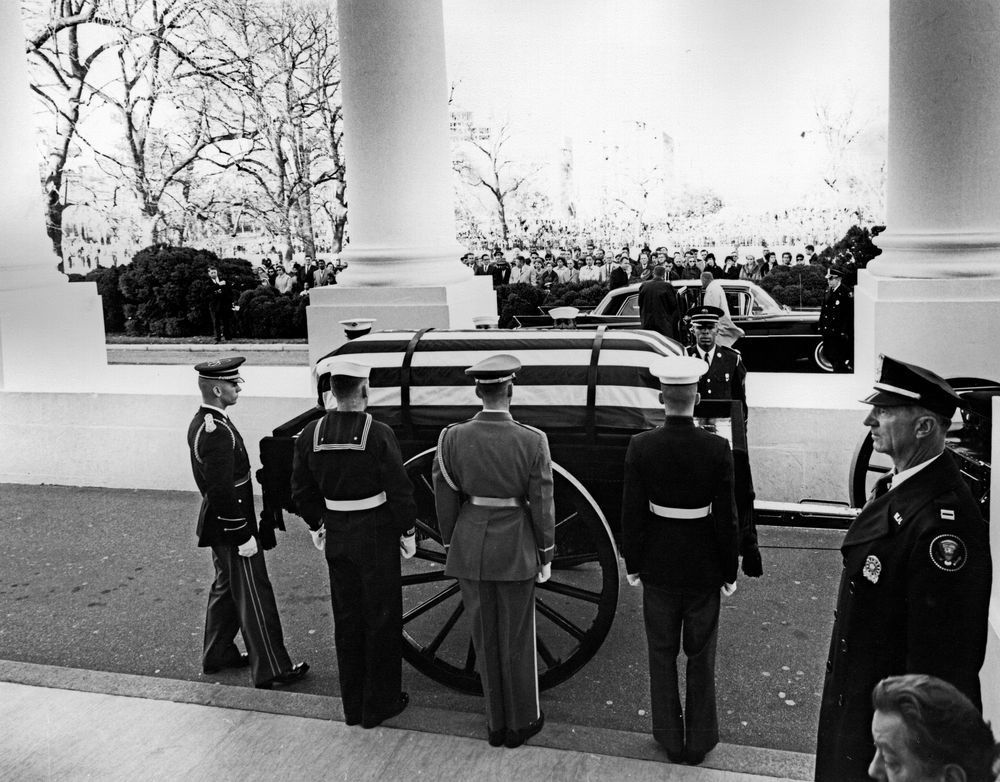
CIF CALLS AUDIBLE
The San Diego Section also apparently was going to play, until Commissioner Don Clarkson announced that the CIF board of managers was suspending the playoffs for one week.
In announcing the postponement, Clarkson unwittingly revealed that the CIF first had decided to “cancel any rallies or dances before and after the games and still hold the contests.”
Often tone deaf, Clarkson and the CIF bosses had wisely reversed course.
Tribune writer and makeup editor Bob Ortman summoned Bartlett and I to the office and we set about trying to fill a section and two pages of prep news, with no games or stats to rely on.
It was a long night, scrambling for copy, trying to keep my mind on the task at hand, and with little zest for the job.
By Saturday morning we were in the middle of a period of funeral music on all radio stations mixed with television coverage of the events in Dallas and the final good-bye to JFK at Arlington National Cemetery.
LINCOLN GRADUATE
U.S. Army Specialist 4 Doug Mayfield, who was graduated from Lincoln in 1960 and grew up in the Encanto community, was among the eight military personnel assigned as pallbearers for President Kennedy.
The eight, from different branches of the military, escorted Kennedy’s body to his autopsy, to the church cathedral, Capitol Rotunda, White House, and Arlington National Cemeter
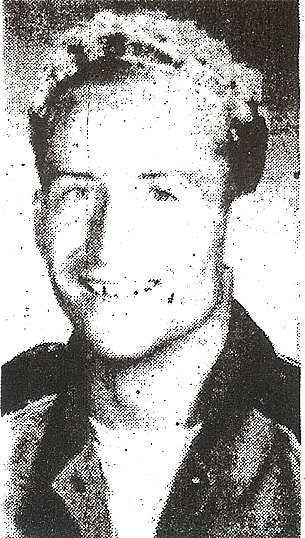
THE GAMES RETURN
Gloom still was in the air, but normalcy had begun to return when the postseason began.
The four semifinalists in the AA playoffs were Kearny, Escondido, Hoover, and El Capitan.
Favored Hoover, which slammed Kearny, 25-0, in the opening game, was knocked out for the second year in a row in a mild, midweek upset, 27-12, before about 8,500 at Aztec Bowl by coach Art Preston’s tough and resourceful El Cap Vaqueros.
The tandem of Dave Duncan and Ray Homesley was too much for Hoover. Duncan rushed for 224 yards in 32 carries and scored three touchdowns. Homesley scored once and kicked three extra points.
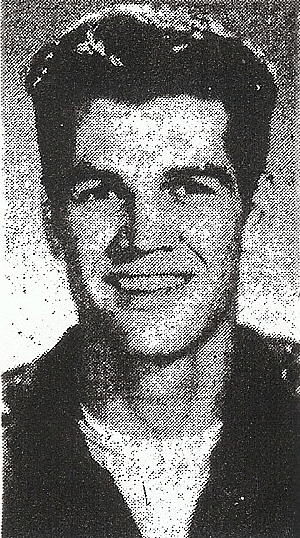
“We made every stupid mistake in the book,” said Hoover coach Roy Engle. “Our ends must have dropped a hundred passes.”
Preston, who announced before the season that his club would be the worst in school history, declared, “I’m still shellshocked. We knew we could run on them but I didn’t figure it would go like this.”
The Vaqueros broke from a 7-6 lead at the half, scoring 20 points for a 27-6 lead. “In the third quarter, the kids on the right side of the line were flat knocking people down,” said Preston.
THE MAIN EVENT
The Escondido-Kearny matchup was the most anticipated since Escondido visited Balboa Stadium and defeated San Diego, 19-13, in 1960.
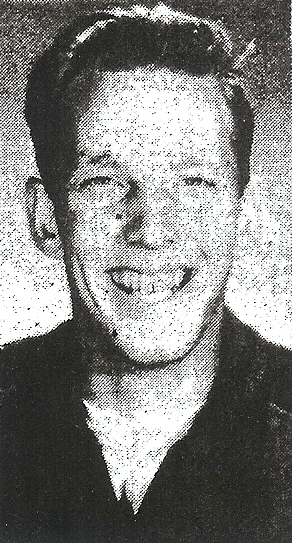
The 9-0 Escondido Cougars were the County’s top-ranked team and considered better than the 9-1 club of 1960. Kearny (8-1) had recovered from an opening-game defeat and shut out 6 of the next 8 opponents, allowing a total of 15 points.
Escondido quarterback Jerry Montiel sustained a groin injury in the second quarter that restricted his play as a defensive back and was a blow to the Cougars, but Montiel had the Escondido ahead, 7-0, late in the half and connected with Mickey Ensley on a 43-yard touchdown strike in the third quarter that tied the game at 14.
Larry Shepard, Kearny’s no-nonsense field leader, got the Komets on the scoreboard with a four-yard pass to spread end (wide receiver in modern nomenclature) Steve Reina with 12 seconds remaining in the half.
Shephard connected with Reina for two more touchdowns in a 20-point third quarter and directed a bruising running attack that took the steam out of the Cougars. Steve Jones, Jimmy Smith, and Charlie Buchanan, who rushed for a combined 274 yards, chewed up yardage, and ran down the game clock.
THE FINALS
The Balboa Stadium attendance of 13,520 was less than expected after tickets were made available at several area outlets, but Kearny’s 20-6 win over El Capitan was no surprise.
“Give Shepard the credit,” said Komets coach Birt Slater. “He called every play out there.”
Shepard attempted only three passes. At one point, Kearny launched 29 consecutive running plays.
“As much as I love our offense taking credit for our success, I do believe our defense made us a championship team,” said Shepard, who singled out many of his teammates.
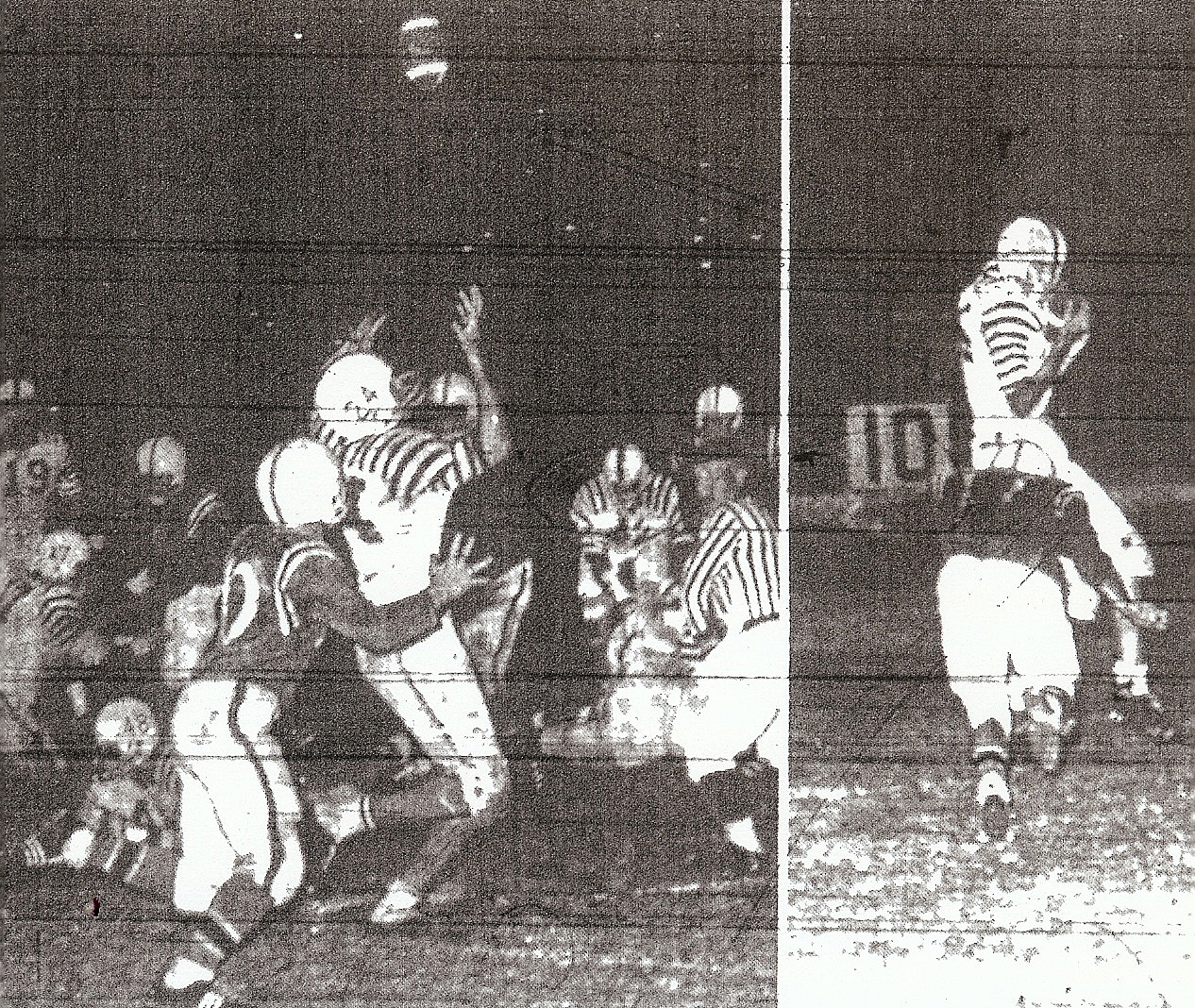
“Bill Carroll (end-defensive back), Jim Smith (running back-DB), and John Erquiaga (center-defensive lineman) played both ways,” said Shepard. “The rest of the defense was made up of Dennis Santiago, Robert Odom, Elton Pollock, Dan Fulkerson, Jeff Henderson, Tom Gadd, and Frank Oberreuter.”
Slater’s team, reminiscent of the San Diego High teams Slater helped coach in the 1950s, arguably was one of the best ever in the San Diego Section.
PRICE GOUGING?
Students from the competing schools would be charged .50 admission for the championship game, but all others students would have pay $1.25, prompting a complaint from Birt Slater.
“It’s a game for the whole league, rather than for the two finalists,” asserted Slater, speaking for Kearny’s Western League partners and El Capitan’s Grossmont League associates.
Commissioner Clarkson agreed with Slater. “But I take my orders from the superintendent and that’s the rule as of now,” said the Don.
THEY WERE AZTECS
The portrait photos of the three men above were taken in 1950, when Art Preston, Birt Slater, and Bob (Chick) Embrey were among six San Diego State players named to the all-California Collegiate Athletic Association first team.
The three also were on the 1951 team that posted a 9-0 record and defeated Hawaii, 34-13, in the 1952 Pineapple Bowl in Honolulu.
WESTGATE POOR VENUE
The San Diego Section was forced to form a partnership of pigskins and cowhide.
More venues for night football were needed, with only three lighted fields in the city, at Balboa Stadium, La Jolla, and Hoover.
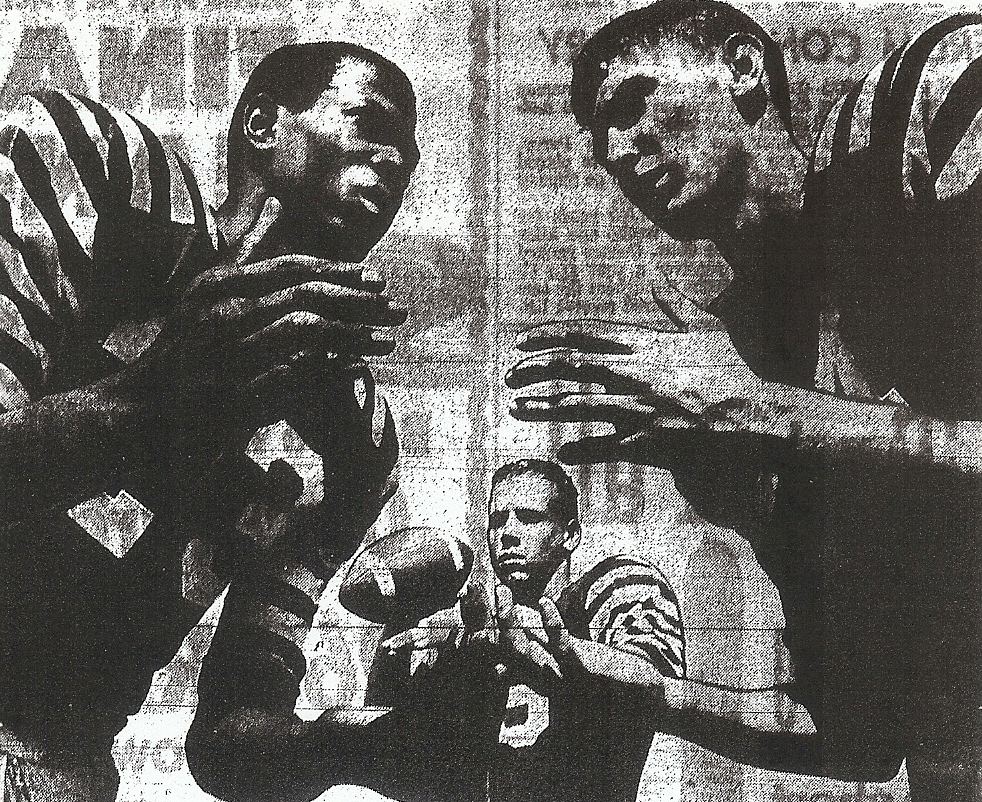
New football varsities at Morse and Madison crowded the schedule.
To relieve some of the stress on the illuminated grids and forestall moving games to the afternoon, several city contests were scheduled at Westgate Park, erected in 1958 as the home of the baseball San Diego Padres of the Pacific Coast League.
Westgate was arguably the most beautiful facility in all of minor league baseball. Repeat, “the most beautiful facility in all of minor league baseball.” Not the game that was being played in the fall.
I took some shots at Westgate as a football facility in one of my Tuesday With The Preps columns.
–There was no football scoreboard, so time was kept on the field.
–Teams could not use the baseball dressing rooms, which meant that halftime meetings were held in dank, dimly-lit tunnels underneath the stands.
–The dressing rooms were unavailable because the Chargers, who practiced at Westgate, occupied one and the Padres used the other for off-season storage.
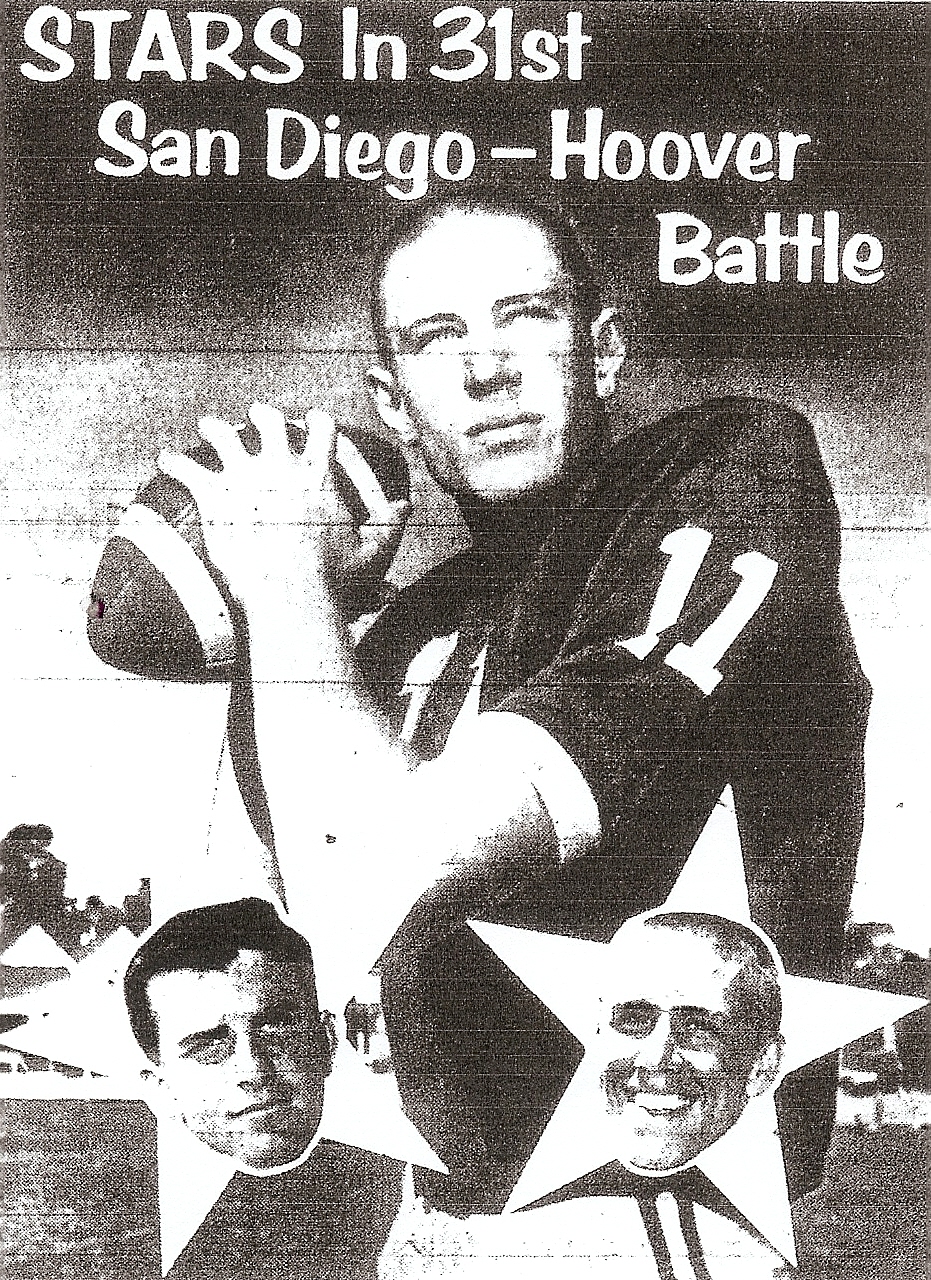
WESTGATE, CON’T.
–The third base line hadn’t been removed and often was mistaken for a sideline boundary.
–The football field was laid out from the leftfield corner to the rightfield corner and was a long distance from the fans.
On the day after the column appeared, I received a call from Eddie Leishman, the Padres’ general manager. Leishman was a prominent figure in the city and had expanded the organization’s community outreach.
“We know this isn’t a football stadium,” Leishman said. “The schools asked us. We didn’t ask them. I’m sorry for the shortcomings, but we’re not making money ($500 rent per game plus parking and concessions) on the deal as it is.”
The timing was interesting. No sooner had my call from Leishman ended that I received another from Don Clarkson.
“They aren’t making any money off us,” complained the CIF boss, sounding as if he and Leishman had rehearsed their lines.
“They got a lot maintenance down there,” Clarkson added, referring to the costs of opening and closing the ball yard. “They have a lot of people working for them at (our) games.”
Sight lines from the grandstand were okay and parking was ample at Westgate. The overhead view was perfect if you exited the press box and took a potentially unsafe walk along the left field roof. Another lighted field would become available when Mesa College opened in 1964.
Westgate Park was phased out for football and the Mission Valley edifice was razed after the 1967 season.
The Padres played their final season in the PCL in 1968 at San Diego Stadium, which became home the next year for the Padres of the National League.
WITHER CARNIVAL
The annual City Schools carnival finally ran out of steam. The 24th and final event was held in 1962, four years after being moved to daylight hours.
Attendance was falling and school bosses didn’t want to deal with recurring rowdyism and violence.
Coaches were generally pleased. It meant that teams now had the option to schedule a ninth regular-season game.
The Grossmont League still played eight games plus the carnival, which drew 11,000 to Aztec Bowl. Most Metropolitan League teams already had a ninth-game option.
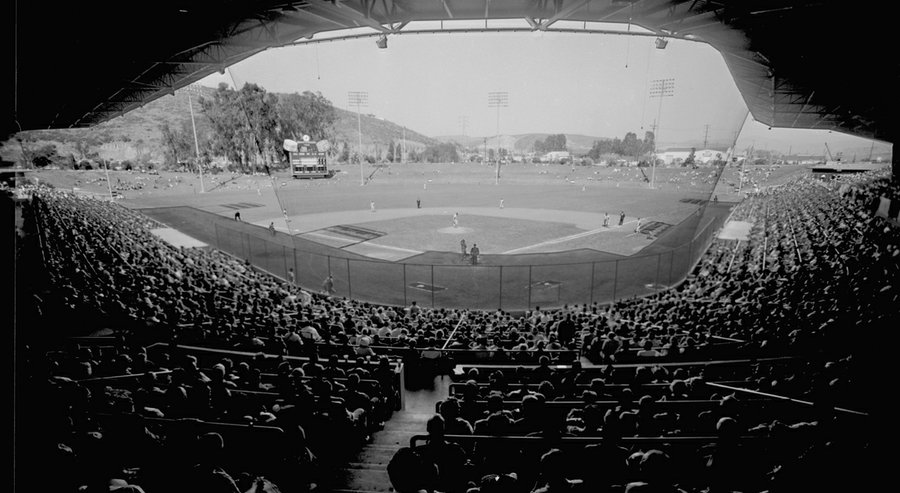
GLOBAL WARMING?
Hoover and Helix battled heat that set a San Diego record of 111 degrees on Thursday, Sept. 27, and on Friday reached 104 , the fifth highest reading since records began in 1874.
Temperature for the 8 p.m. kickoff on Sept. 28 was at least 100 degrees and the Cardinals and Highlanders responded with a memorable game before about 6,000 persons at Hoover.
The Cards won, 14-13, when Hoover drove 81 yards in the final 4 minutes to score the winning touchdown.
DRESS DOWN
Sweetwater tried to beat the heat when it came out for pregame against visiting Crawford. The Red Devils wore only shorts, T-shirts, helmets, and cleats. Crawford still prevailed, 14-0, after the Red Devils donned the rest of their uniforms.
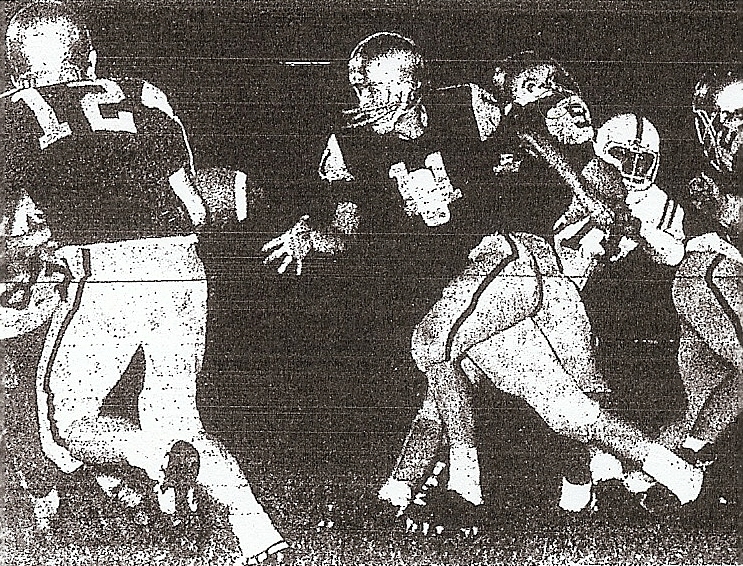
THEY SAID IT
“I don’t how good we’ll be, but that’s the worst we’ve been beaten here in five years. We’ll get a little better each week, I hope”. —Kearny coach Birt Slater after a season-opening, 25-0 loss to Hoover.
“It looks like a long year and a good time to go hunting.”—El Capitan’s Art Preston, assessing Vaqueros’ season prospects.
“It should be as good a game as will be played in the County”.—Escondido coach Chick Embrey before the Mar Vista game, which Escondido won, 43-21.
“This is El Foldo week for us. We do it every year against Helix. We’re olive masters”.—Preston before Vaqueros lost their only regular-season game, 12-9 to Helix
“I couldn’t see in the first half and the staff took over. Maybe that’s all the better”.—Grossmont coach Sam Muscolino, his glasses broken after an errant pass hit Muscolino in the face during pregame of a 13-3 win over La Jolla.
SIGN OF THE TIME
Police were looking for vandals who scattered hundreds of inch-long roofer’s nails at Glasgow Drive, Armitage, and Aragon streets in Clairemont.
Two tires were punctured on the first police car that responded. A City street sweeper and neighbors swept the area clean.
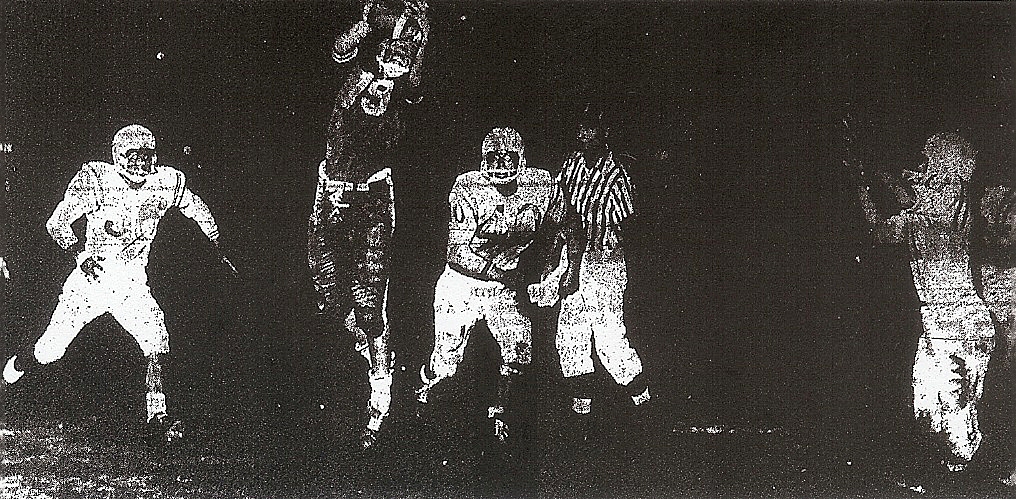
‘HAWKS DECLARE BORDER WAR
Madison didn’t do a lot in its first season, with a 3-6 record, but coach George Hoagland’s Warhawks quickly established neighborhood ground rules.
Behind quarterback Al Fitzmorris, Madison defeated 1962 San Diego Section playoff runner-up Clairemont, 12-6, in the clubs’ first meeting in the season’s second week.
KINGDOM FOR A CASTLE
Castle Park, at a cost of $1.75 million on 47 acres, became the third public high school within the Chula Vista city limits.
Principal Ralph Skiles welcomed about 950 graduates of Chula Vista, Hilltop, and Southwest junior highs, plus transfers from Chula Vista and Hilltop highs.
Sweetwater was the first south of the San Diego City Limits, welcoming students in 1909 as National City High. Chula Vista followed in 1947, Mar Vista in 1950, and Hilltop in 1959.
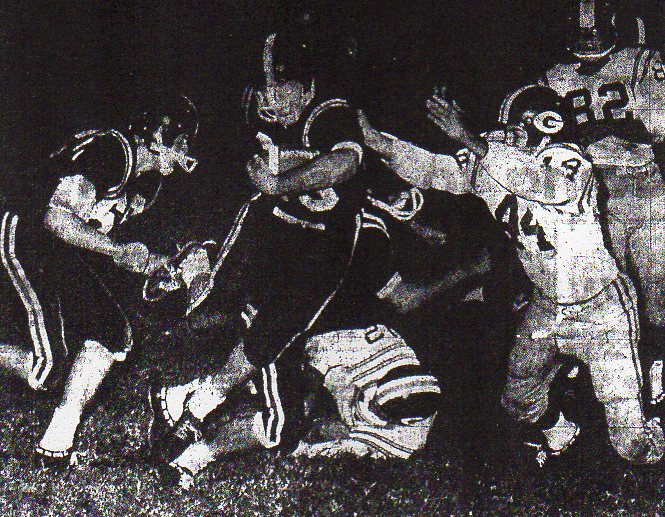
RARITY
Point Loma edged La Jolla, 2-0, in the fourth safety-only game ever played by County teams.
A bad snap from center that sailed out of the end zone gave the Pointers two points in the fourth quarter and they made them stand.
La Jolla’s Greg King attempted field goals from 54, 51, and 41 yards. The first two fell short by about five yards. The third attempt, with 21 seconds remaining in the game, was partially blocked.
“If that last one hadn’t been blocked it would have been good,” said Vikings coach Gene Edwards, employing head- scratching logic.
Other 2-0 games (the 1926 contest went into overtime and San Diego was awarded two points for gaining the most yardage):
| YEAR | WINNER | LOSER |
| 1919 | San Diego | 32nd Infantry |
| 1926 | San Diego | Glendale |
| 1940 | Vista | Hoover Sophomores |
| 1958 | Vista | Palm Springs |
CHAIN REACTION
Coronado bid goodbye to the Avocado League and returned to the Metropolitan, of which it was a member from the Metro’s beginning in 1933 until 1954, when the Islanders became part of the new Avocado loop.
Fallbrook moved to the Avocado League from the Palomar and newcomer Orange Glen took Fallbrook’s place in the Palomar.
OCEANSIDE KING OF CLASS A
Jim Harrison, a 150-pound halfback, ran for 175 yards in 27 carries led a ground attack that gained 374 yards as Oceanside won the Class A title with a 32-13 victory over Poway.
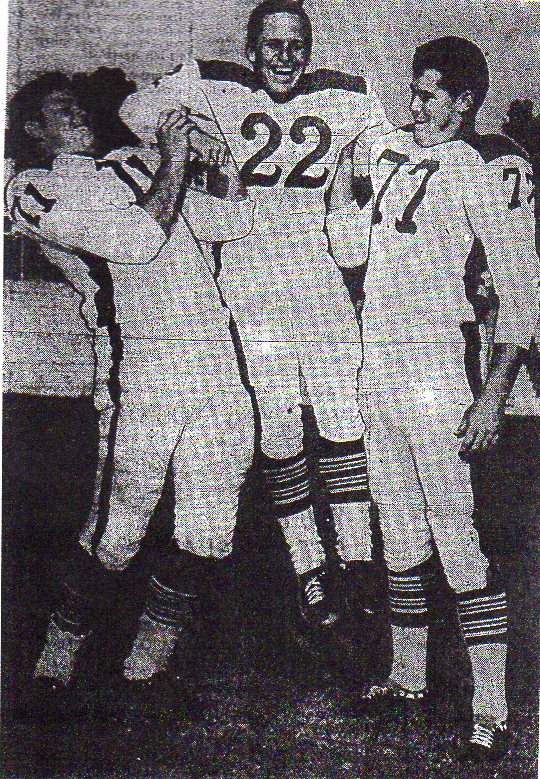
KINGDOM FOR A HOUSE?
Jerry Van Ooyen, a linebacker at Indiana from 1949-51, was named head coach at Ramona. Van Ooyen had been a real estate salesman in the mountain community for five years.
QUICK KICKS
Mission Bay ended a 13-game losing streak with a 12-7 win over first-game-ever Castle Park on Rick Toller’s 20-yard touchdown run in the final seconds…the Buccaneers had not been triumphant since a 6-0 decision over La Jolla in the third game of the 1961 season…just so he wouldn’t be mistaken for a player as he stood behind the defensive line, Escondido coach Chick Embrey wore No. 369 on the jersey of his practice sweats…Hilltop dedicated a new lighted stadium seating about 4,000 in a 6-0 loss to Clairemont…light poles had not been erected, delaying Poway’s long awaited inaugural game under lights against Ramona in the season’s sixth week…after missing three point after attempts in a 25-0 win, Hoover coach Roy Engle turned to 275-pound Richard Gauthier, who was 2 for 2 including the game deciding conversion in the win over Helix…Kearny halfback Jimmy Smith became a No. 1 draft choice by the Washington Senators out of Oregon and won a landmark antitrust suit against the NFL after a career-ending injury…Kearny end Robert Odom played two seasons with the Dallas Cowboys out of Idaho State… lineman John Erquiaga was a standout at UCLA and Reina was a starting receiver at Oregon….linebacker Tom Gadd later became head coach at Bucknell University in Pennsylvania…Reina died at age 44 of leukemia, and Gadd was struck down by brain cancer at age 55 in 2003, after he had coached Bucknell to seven straight winning seasons that followed a period in which the program had one winning year in the previous 14….
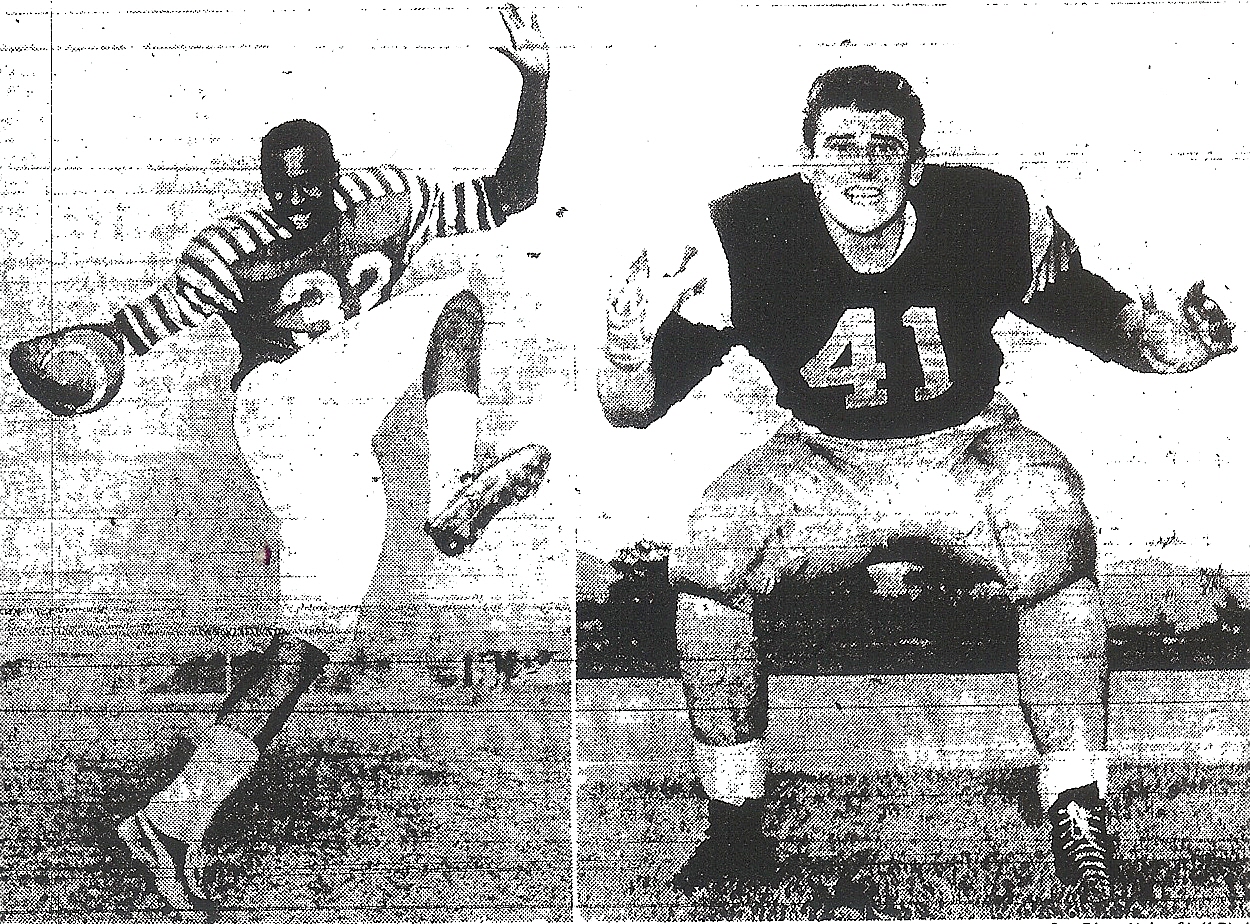
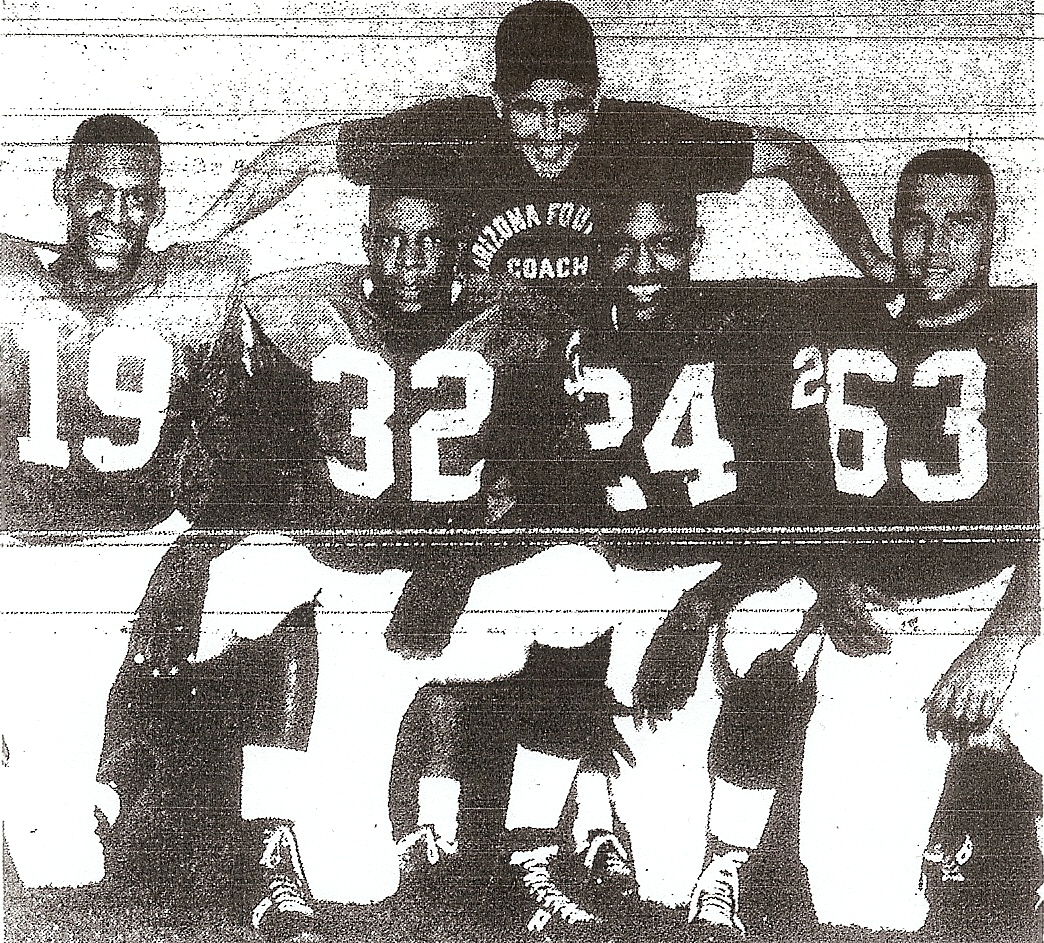
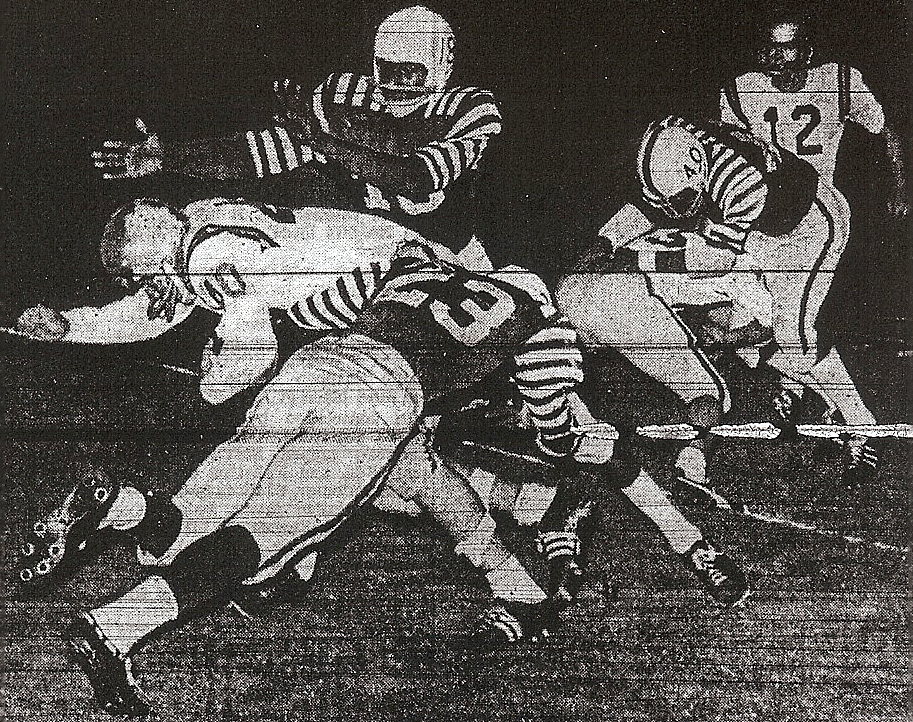

One of your best Rick. I just finished gym class at Sweetwater. I will never forget that day. Thanks.
WE all have memories of that day. The world definitely changed.